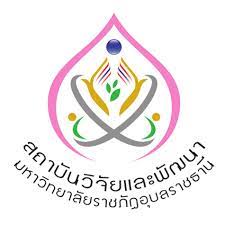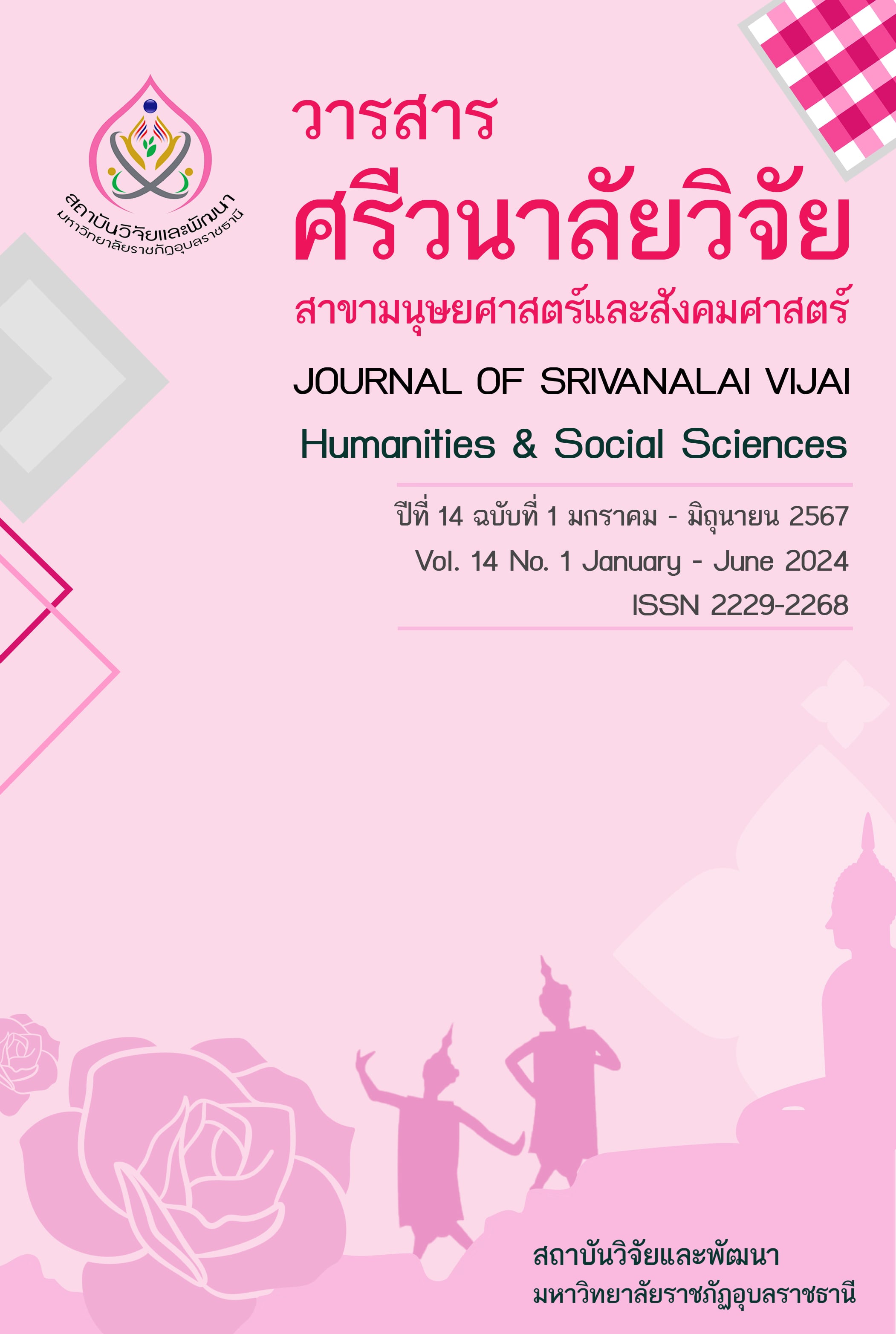การสร้างสรรค์แนวคิดและองค์ประกอบการแสดงละครร่วมสมัย เรื่องนิ้วสุดท้าย
Main Article Content
บทคัดย่อ
บทความฉบับนี้มีวัตถุประสงค์ คือ 1) เพื่อสร้างแนวคิดการแสดงละครร่วมสมัย เรื่อง นิ้วสุดท้าย 2) เพื่อสร้างสรรค์องค์ประกอบการแสดงละครร่วมสมัย เรื่อง นิ้วสุดท้าย ด้วยวิธีการศึกษาข้อมูลทางวิชาการ การสัมภาษณ์ การสังเกตการณ์ เพื่อนำข้อมูลสู่การสร้างสรรค์ละครร่วมสมัย เรื่อง นิ้วสุดท้าย ผลการวิจัยพบว่า 1) การสร้างแนวคิดการแสดงละครร่วมสมัยเรื่อง นิ้วสุดท้าย เป็นการสร้างสรรค์ ศิลปะการแสดงจากหลักธรรมคำสอนทางพุทธศาสนา “กาลามสูตร” โดยเนื้อเรื่องส่วนหนึ่งเกี่ยวข้องกับการเชื่อโดย ไม่ไตร่ตรองหาเหตุผล ทำให้เกิดความเดือดร้อนแก่ตนเองและผู้อื่น ซึ่งสอดคล้องกับชีวิตในสังคมปัจจุบันที่มีการใช้ เทคโนโลยีในการสื่อสารอย่างแพร่หลายจนเกิดเป็นปัญหาที่มีการหลอกลวงกันด้วยข่าวปลอม (fake news)การ สร้างสรรค์ครั้งนี้มุ่งเน้นให้ละครเรื่องนี้สามารถนำไปใช้ในการสะท้อนให้ประชาชนทั่วไปตระหนักถึงผลเสียของการเชื่อ ข่าวลวงหรือข่าวเท็จโดยขาดวิจารณญาณ นอกจากนั้นยังเป็นการเผยแผ่คำสอนของพระพุทธศาสนาในรูปของสื่อ บันเทิง โดยผู้ชมจะได้รับสุนทรียศาสตร์ไปพร้อมกับความสนุกเพลิดเพลินเหมาะสำหรับจัดแสดงให้ประชาชนทุกเพศ ทุกวัยได้รับชม 2) การสร้างสรรค์องค์ประกอบการแสดงละครร่วมสมัย เรื่อง นิ้วสุดท้าย มีลักษณะดังนี้ 1. ดำเนินเรื่องด้วย รูปแบบการแสดงละครร่วมสมัย 2. ใช้บทละครคำกลอนและการเจรจาแบบร้อยแก้ว 3. ทำนองเพลง ดนตรี ประกอบการแสดงรูปแบบผสมผสานระหว่างดนตรีไทยและดนตรีสากล4. ผู้แสดงเป็นผู้ที่มีประสบการณ์การแสดงที่ดี และสามารถถ่ายทอดอารมณ์ของตัวละครได้อย่างเหมาะสม 5. ออกแบบลีลาผสมผสานระหว่างนาฏศิลป์ไทยและ นาฏศิลป์ร่วมสมัย6) เครื่องแต่งกายออกแบบให้สื่อถึงวัฒนธรรมของชนชาติพันธุ์อินเดียในสมัยพุทธกาล โดย ผสมผสานกับวัฒนธรรมการแต่งกายของไทยสมัยกรุงสุโขทัย 7) เวที ฉาก และอุปกรณ์ประกอบการแสดงมุ่งเน้น ความเรียบง่ายตามท้องเรื่อง8) ใช้แสงที่สื่อถึงความรู้สึกของตัวละคร 9)ออกแบบสื่อมัลติมีเดียด้วยการฉายภาพยนตร์ บนจอสลับกับผู้แสดงจริงบนเวที
Article Details
เอกสารอ้างอิง
ฐาปนีย์ สังสิทธิวงศ์. (2564). พุทธศาสน์นาฏกรรม: การสร้างสรรค์นาฏศิลป์จากบริบทสังคมร่วมสมัยใน
พระพุทธศาสนาเรื่องพุทธศาสน์ศรัทธา ผ้าเหลือง. วารสารมนุษยศาสตร์และสังคมศาสตร์ มหาวิทยาลัย
ราชภัฏบ้านสมเด็จเจ้าพระยา, 15(2), 171-196.
นพมาส แววหงษ์. (2550). ปริทัศน์ศิลปะการละคร. (พิมพ์ครั้งที่ 3). กรุงเทพฯ: สำนักพิมพ์แห่งจุฬาลงกรณ์
มหาวิทยาลัย.
พระครูโกศลธรรมานุสิฐ, พระครูสุตาภรณ์พิสุทธิ์, พระครูพิพัฒนวุฒิกร. (2562). พุทธศาสนากับการพัฒนาสังคมไทย
ในยุคไทยแลนด์ 4.0. วารสารวิชาการ Veridian E –Journal, Silpakorn University ฉบับภาษาไทย,
(4), 1524-1539.
พรรัตน์ ดำรุง. (2563). นักวิชาการด้านศิลปะการละคร คณะอักษรศาสตร์ จุฬาลงกรณ์มหาวิทยาลัย.
[บทสัมภาษณ์].
ฤทธิรงค์ จิวากานนท์. (2550). ภาพบนเวทีในปริทัศน์ศิลปะการละคร. กรุงเทพฯ : สำนักพิมพ์แห่งจุฬาลงกรณ์
มหาวิทยาลัย.
ฤทธิเทพ เถาว์หิรัญ. (2565). เวทีและฉากในการสร้างสรรค์ละครร่วมสมัย เรื่องนิ้วสุดท้าย. คณะศิลปะนาฏดุริยางค์,
สถาบันบัณฑิตพัฒนศิลป์.


